#renationalize
Explore tagged Tumblr posts
Text
hey at least we're not privatized! sure the government had to learn the hard way that privatizing railway infrastructure kills people but at least they learned eventually

#it's a shame we don't have a Labour government right now; they'd probably fix all of this#maybe if one of the privatized power companies starts a wildfire due to not maintaining their cables then they'll get renationalized#the railways are getting renationalized at least. so there's something#oh and don't forget it's not just infrastructure that was destroyed by privatization#for instance british steel production collapsed after privatization#so yeah thatcher ruined everything (and then john major finished it off)
54K notes
·
View notes
Text
UK takes first step in rail renationalization scheme
Britain’s South Western Railways became the first private operator to return to public ownership. The UK’s South Western Railways on Sunday was returned to public ownership, kicking off a campaign for the Labour government. The move is part of the government’s larger plan to renationalize the country’s rail services, as had been pledged by Prime Minister Keir Starmer when he took office last…
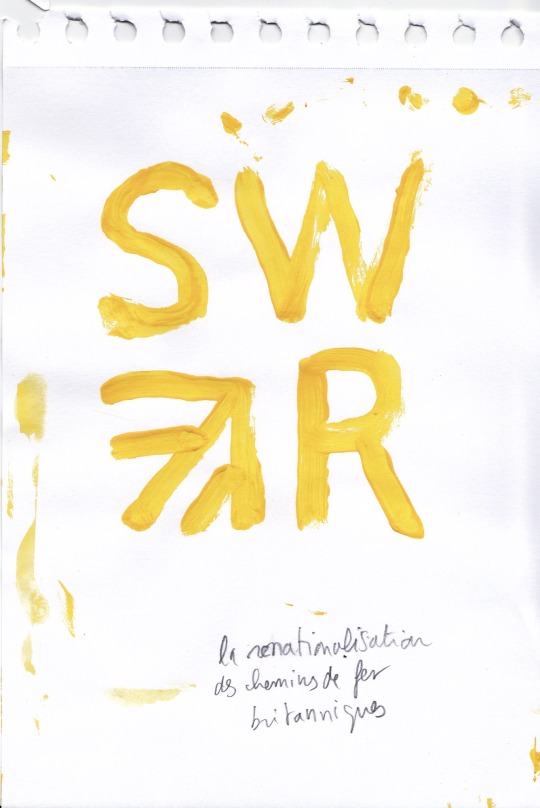
View On WordPress
0 notes
Text


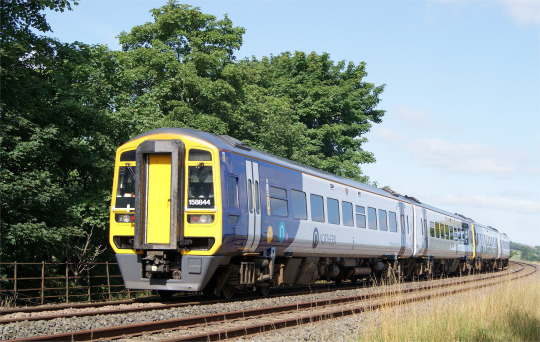

Britain has lots of trains, some of which have been around since the days of British Rail. Although there has been a period of time where the railways were privately operated, that time is (finally) coming to an end with the creation of Great British Railways. So, out of every train that survived the privatization of British Rail (meaning it is now run by a government-owned rail service) which one is your favorite? If you need a reminder of what the trains shown are, keep reading. If your favorite isn't one of the ones listed, too bad.
Intercity 225 (Class 91): high speed electric trains that have run on the east coast main line since 1989, originally run by BR's Intercity sector and now run by LNER (a DfT operator of last resort). The locomotives (the class 91s) were built by British Rail Engineering Limited
Class 455: electric trains built by BREL for suburban services in the southwest of London. They've been in service since 1983, first under British Rail, then under BR's Network SouthEast sector, and are now operated by the state-owned South Western Railway (the first one to be renationalized in preparation for Great British Railways). Apparently they're being refurbished to run until the 2030s (due to problems with the Aventras) so they're not leaving anytime soon.
Sprinter (Class 158, among others): diesel (eugh) multiple units built to replace older trains. Some variant of the Sprinter has been in service since 1984, and they can be found all over the place (even in Thailand). Built by BREL (and Metro-Cammell, and Leyland), operated by loads of different companies that I can't be bothered to list.
Networker (Class 465, among others): a series of electric (and diesel) multiple units built for Network SouthEast (hence the name), in service since 1989. Found in and around London, operated by Southeastern (a DfT OLR) and some private companies that we don't care about. Built by BREL and Metro-Cammell.
39 notes
·
View notes
Text
Getting the world’s tech companies to develop functioning sets of water-resistant e-gills that people can easily transplant into the sides of their necks, in a simple home operation on the kitchen table, using a bread knife and a jar of peanut butter as an anesthetic. Also, breeding a giant space eagle with a 2,000-mile wingspan, visible from the Great Wall of China, to glide around in orbit, shading the world from the sun, depending on where the sun is in the sky at the time. Nudging the world slightly further away from the sun, in orbit, using a giant intergalactic snooker cue so that it becomes a bit let hot. Or nationalizing the sun, then privatizing it, then renationalizing it, over and over again until the sun becomes progressively less efficient – which I think might be the most realistic way to do it in a free market economy.
- Andy Zaltzman, the current leading ideas for how to deal with climate change
9 notes
·
View notes
Text
glad to see that the option I preferred won, and that it was not 50-50. then there wouldn’t have been much point in running this poll.
Oh no we're being renationalized


9 notes
·
View notes
Text
NATIONALIZE DOFASCO CANADA
RENATIONALIZE CANADIAN NATIONAL RAILWAYS
NATIONALIZE THE MINES
#steel mills#canada#trade war#arcelormittal#dofasco#hamilton#algoma steel#ontario#industry#canadian politics#canadian national#steel#aluminum#tariffs
13 notes
·
View notes
Text
Map Monday — Zanzibar




Built on Zanzibar Island, Wind Power Station 7 was one of many stations built in the 2400s under the East African Protectorate's renationalization efforts. In the 26th century, it was decommissioned to host classified military training exercises.
#MapMonday#map monday#halo2#halo 2#halo2maps#halo 2 maps#halo zanzibar#halozanzibar#halo2zanzibar#halo 2 zanzibar#halopedia#halowiki#halo wiki
7 notes
·
View notes
Text
just think: in a little under a month that’ll be the government’s floor that you’re sitting on
sat on the floor thanks swr 👍
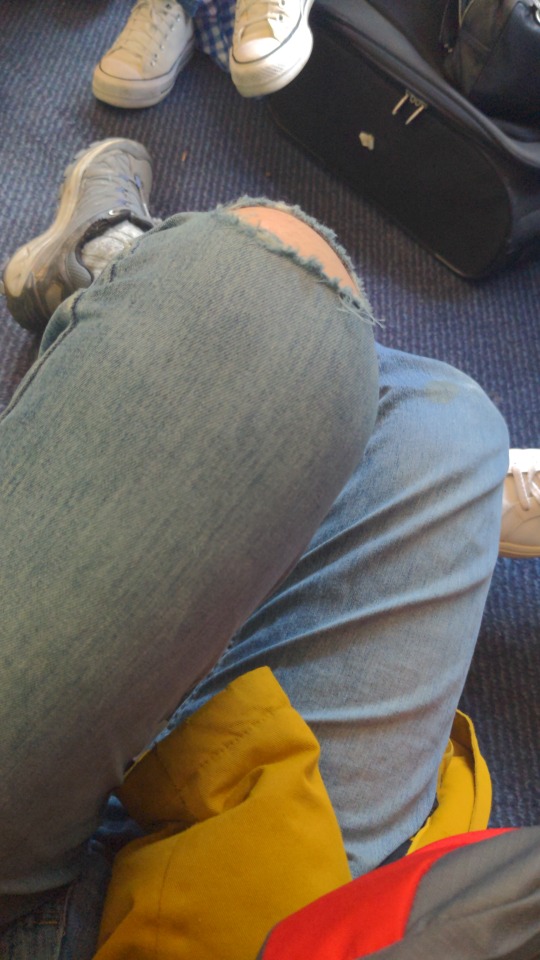
#Well maybe not since I’m not sure if the ROSCOs are being renationalized as well#But the train service will be since SWR is getting renationalized on May 25th#Looks like the 455s are going to outlive privatization after all
19 notes
·
View notes
Text
While Marx often shows enthusiasm for the potentiality of enhanced forms of human cooperation enabled by globalizing production, already in the nineteenth century, he observed an antagonistic separation of town and country and suggested that production chains were overstretched and wasting resources. Today, lessening the spatial disjuncture between production and consumption must be an explicit feature and aim of sustainable and just transition and, in this context, calls on the left for partial deglobalization, including the shortening of commodity chains, have merit and are quite consistent with Marx’s analysis. In a process of partial deglobalization, production for local and domestic needs—rather than production for export—would again become the center of gravity of the economy. A move away from the export orientation of domestic corporations and a process of renationalization could also allow enterprises to begin to develop their own strategies, moving away from the whims of the global market and choices taken by corporate controllers. Such transformation could enable spaces for independent development in the Global South. To do so, they could focus on shifting agrarian systems, orienting their production away from agro-export (which is a source of tremendous ecological irrationality and unequal exchange) toward food sovereignty. Such shifts would need to be accompanied by simultaneous, coordinated shifts toward enhanced local and domestic food production in Global North, alongside a move from high-input agriculture to agroecology, and, in settler colonial contexts, enhanced Indigenous sovereignty. Within domestic spaces or regions, efforts must simultaneously be made to mend a rift between the city and the country. For a model of the environmentalist city, one could look to Havana for inspiration. During Cuba’s Special Period in the 1990s, organic, low-input agriculture was developed both in the countryside, as well as in the island’s capital through urban farms. Urban agriculture is here not niche or small-scale—it covers large expanses within and at the outskirts of the city, where rich land is located. In the transition to renewables, energy production should also be localized as much as possible. This is a potentiality inherent in renewable energy “flow,” in contrast to concentrated energy “stock,” or fossil fuels. While lessening the spatial disjuncture between production and consumption is part of developing ecologically rational production, this aim should be recognized to be in some tension with economic planning (at least in the longer term), insofar as expansive planning is potentiated by the socialization of production. Thus, calls for localization of production imply a diminishment in productive association across firms and regions and the potential to plan such interconnections. Practically, it is important to recognize that such a process confronts material interdependencies, as existing productive networks and infrastructural configurations support and sustain huge swaths of human life. Different regions and cities also have different specializations and different ecological capacities. In an existing world of evolved economic interdependencies, the reproductive needs of various communities require continued global resource flows. Climate change also creates severe survival and livelihood challenges on a highly uneven basis, and global trade and divisions of labor can act as safeguards against issues such as pandemics related to water-supply failures and reduced agricultural yields. More broadly, we should carefully consider Marx’s suggestion that well-organized territorial divisions of labor are collective powers and can be a part of collaboration in human affairs. This extends to territorial specialization, which, consciously organized, could involve a collaborative partitioning of resources and capacities.
37 notes
·
View notes
Text
No. 47 - MALÉV Hungarian Airlines

MALÉV Hungarian Airlines (Magyar Légiközlekedési Vállalat) was the flag carrier of Hungary until its dissolution in 2012. I'm excited to talk about MALÉV for a couple of reasons. I'll get into those later, when they come up, so let's cut off the preamble and talk about an airline sadly lost to recent history after 66 years in operation, leaving in its place...
Well, nothing, actually. Hungary no longer has a flag carrier, thanks to MALÉV's rather catastrophic end, and Budapest is now primarily served by ULCCs like Ryanair and Wizz Air. It's a very tragic thing, in my opinion, for a country to lose its flag carrier, and I hope that MALÉV, or something else to replace it, will be (re)established at some point, but for the moment it's a beautiful relic of a less financially tempestuous time.

MALÉV's legacy is well-kept, with the Budapest Aeropark open-air museum containing many more preserved aircraft than a lot of extinct airlines will see. Clearly, this airline was dear to a country.
While I never got to fly on MALÉV, I'm excited to cover this airline's eclectic little fleet, which does one thing I can't pretend for a moment doesn't immediately make me eager to discuss an airline:
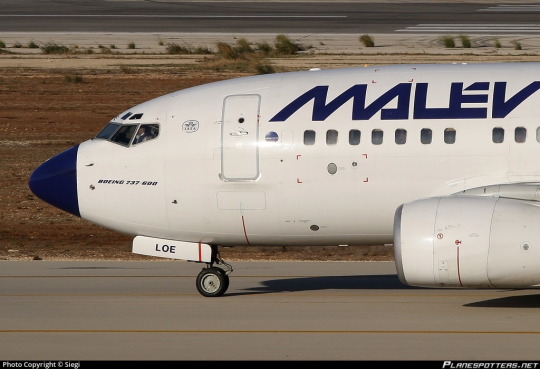
When MALÉV folded, Hungary lost a symbol of national pride, but the rest of us lost something too: one of the rapidly-dwindling number still fighting for the long-lost cause of the painted nose radome.
MALÉV was founded in 1946 as MASZOVLET (Magyar-Szovjet Polgári Légiforgalmi Rt.), born from the merger of a handful of similarly acronymic pre-war Hungarian airlines, plus the Hungarian branch of Aeroflot. It was renamed to MALÉV in 1954, when the Hungarian government bought out all the remaining Soviet involvement in the airline, making it a fully nationalized company. It was 'privatized' in 1993, but the majority of ownership was split between a government-owned holding company and the employees, with the government seemingly intent on privatizing it properly throughout. From 1999 to 2003 its CEO was actually József János Váradi, who is probably better known as the founder and CEO of Wizz Air. It was then sold to Russian airline-alliance-slash-joint-management-company AirBridge (later known as AiRUnion), a LATAM-without-rebranding-ish thing which existed for all of a couple years until it went under in 2008, all of its member airlines, classics like Domedovo and KrasAir also defunct. It was briefly under minority ownership by Vneshekonombank (now VEB.RF), a Russian corporation meant to invest in the development of urban infrastructure, but then renationalized by Hungary. During this period of privatization it underwent an elaborate game of CEO musical chairs, broadly struggling and being subsidized heavily by the Hungarian government. Once this happened the EU ruled that said state aid was actually illegal, and forced MALÉV to repay the years of assistance which had kept it above water - which of course promptly killed it, being more than a year of its revenue.
I dislike this pretty broadly. I'm actually of the opinion that flag carriers shouldn't be privatized at all, and it feels like it frequently makes things immediately and dramatically worse. This isn't really the place for pontification, but MALEV's downfall makes me genuinely sad. It feels almost vindictive in its drama and suddenness, and it killed something legitimately important to both infrastructure and national identity. (Also, I find it hard to wrap my head around the government's determination to privatize MALÉV when they ended up pouring so much money into it anyway.)
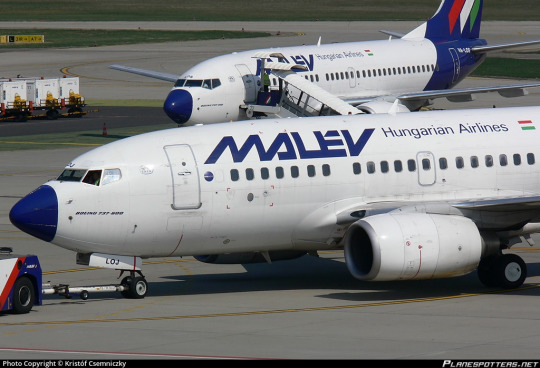
While other airlines eventually picked up the slack, in the immediate aftermath traffic at Budapest Liszt Ferenc International Airport immediately and drastically dropped, and now the only real choices, in a lot of cases, are Wizz Air and Ryanair. Which is broadly fine, I mean, I frequently can't afford anything else, but it's a bit uninspiring for the only option. It's just outright depressing when two airlines operate the vast majority of flights at any airport, with barely any other airlines offering even three, and those two airlines are Ryanair and Wizz Air, especially when you're just smack in the middle of Europe the way Hungary is and are a pretty easy place to route flights through. Increased range on airplanes is obviously a huge benefit to many people, but I'm getting the sense it may have been a cruel joke the universe saw fit to play on Hungarians.

There are three rows of Wizz Air destinations cut off, by the way.
But, okay, enough of that. I'm here for the livery. MALÉV has had three-ish main liveries, from their early days flying the Lisunov Li-2 (a Soviet license-built DC-3) all the way up to their final shuttering.

Yes, that's right - HA-LIX "Kármán Tódor" is in fact an airworthy Li-2![1]
I'm trying to keep my posts at a length that is manageable to both write and read, so I won't be fully covering all the MALÉV liveries. I'm going to assume any requests are for the most up-to-date version unless specified otherwise. But I do just need to mention that I really want to do a follow-up post on MALÉV's original livery, which I think is a standout from its era - just brushing over it in a general history summary doesn't do it justice. It's modeled below on the Ilyushin Il-14 registered HA-MAL, preserved at Aeropark, while the 1968-1986 livery is modeled on this period photograph of Tupolev Tu-134A HA-LBG.
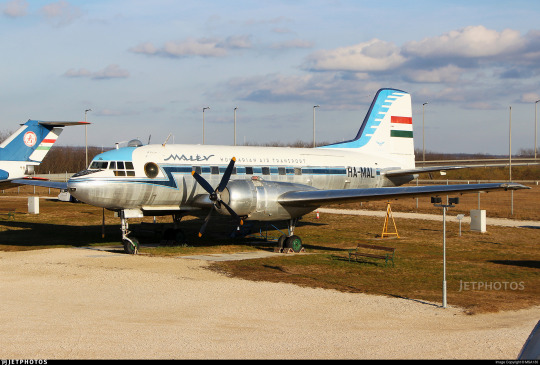

This is another reason I'm very excited by the MALÉV request. Hungary was, if you will, the sort of country which purchased Tupolev airliners, which means I get to use pictures of and talk about old Soviet models! MALÉV began switching to Western planes in the 80s and withdrew their last Tu-154s in the early 2000s, so they're not necessarily the majority of examples, but I do sort of favor the Tupolevs when I can. They're just very idiosyncratic for someone used to looking at mostly Western aircraft, which is to say basically anyone born in the 90s or later. HA-LBG is a Tu-134A, which you can tell because of the glazed nose. Why the glazed nose? Well, that's the classic Soviet navigator pit!
Unfortunately, the later MALÉV Tu-134s had modern nose radomes, visually indistinct from the fuselage around them. Thankfully, I am finally getting to the actual subject of the damned post, which is that in their last-ever livery, designed by László Zsótér[2] and introduced in 1986, MALÉV remembered where they came from and decided they were going to bring back a trend that should never have gone away.

Why did airlines stop painting the noses of their planes? That's a rhetorical question, they stopped doing it because technology had improved to the point they could use other colors on the radome without interfering with the weather radar's function, but, like, why did they stop doing it? Just look at this. The painted nose adds to a feeling of weight and forward momentum, and now the plane looks like a shuttlecock being launched directly at your face during a game of badminton against someone who dislikes you and is sincerely trying to cause you physical injury. She looks like a throwing dart for giants.

Or like a crayon, maybe, also for giants, especially with the stubbier 737 models MALÉV liked to use. The dark color is also very distinctly beaklike.

For some reason, it really immediately and vividly reminds me of the signature beak thing the drag queen Abhora (of Dragula fame) does. I absolutely love it in both cases, though thankfully to the best of my knowledge MALÉV did not embody horror, filth, and glamor.

It does, however, create quite a startling effect via the contrast between white and near-black blue. I will say that this color scheme makes the plane look a bit...villainous? I like that a lot because I'm twisted in the head. The thing that comes to mind is that this plane is haglike. And I love that for her. But I get that this statement could potentially read as insulting, so just, you know, I do mean it as a compliment. I like that she's a hag. I mean, I'm a Siouxsie and the Banshees fan, I'm no stranger to the power of big dark blocks[3].
I think the choice in color here is absolutely fascinating. You see, the Hungarian flag looks like this.

For a regular three-stripe flag I quite like Hungary's dustier take on the archetype, but we can't get around the fact that green, red, and white is an incredibly common combination. Probably in large part due to this, these are also some of the most oversaturated colors in livery design.

Here are just some of the examples that came to mind - and that's not including similar but not identical schemes[5]. These color schemes can obviously still work (two of these liveries are among my favorite examples of Eurowhite done Euro-right, guess which!) but I think MALÉV made the right choice in not trying to compete with it.
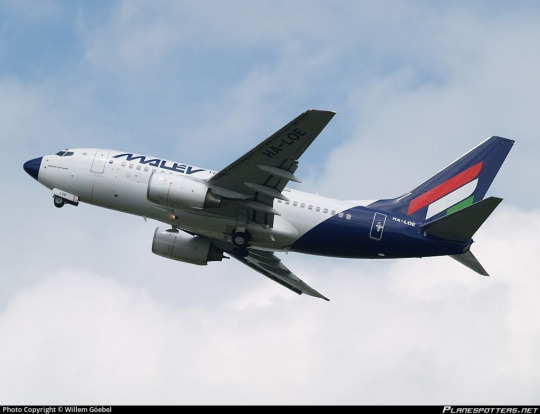
It's kind of interesting, though, how instead of just rejecting it altogether (as Mexican flag carrier Aeroméxico has done, as just one example) they picked a very dark off-black shade but then incorporated the colors of the Hungarian flag. This could very easily have gone phenomenally bad but I think it worked for them. It draws interest to the tail (while the blue background keeps it from being detached), the angular use of lines goes with the similar sharpness of the wordmark, and the muted shades Hungary in particular has to work with suit the generally washed-out scheme of this livery.
And to be clear, I don't mean washed-out as an insult. You could easily be fooled into thinking I dislike desaturation based on my reviews here, but I actually really love it and my main long-term non-Runway-Runway project has stylized desaturation as a core feature of its style guide, so to speak. So let me talk about desaturation! The reason desaturation is so frequently ugly is that people use desaturated colors the same way they would use vivid ones and expect it to get the same result, which it obviously won't. The most important thing for use of desaturated colors, in my own opinion, is maintaining very strong contrast. MALÉV does this, obviously, and the flag honestly lends itself to this via the white stripe's placement in the middle, and to a lesser extent the placement of these colors to break up the dark tail. Interesting designs can be subtle, but minimalism only works when it is an active choice designed to create an impression of minimalism (Vietnam Airlines) rather than a blank space (Lufthansa).
The more similar in hue and brightness to each other desaturated colors are, the more the entire thing starts to look flat. MALÉV avoids this by using green, red, blue, and white, which are completely distinct colors. It also creates a certain staccato impression via the sectioning off of the nose, the sharp lines of the wordmark, and the just-as-sharp lines of the tail. This is the point where I have to bring up that this livery was designed for, in large part, Tu-134s and Tu-154s, and these planes are themselves very visually sharp. While they have a very streamlined appearance without question, their planform actually, to me, suits the style of MALÉV's livery better than some of the other types they used, and may explain a bit more why it was designed how it was.

The wing sweep on the Tu-134 is 35 degrees, which is very unusually aggressive even for a rear-engined t-tail plane. I find that the less swept an airplane's wing is, the less it breaks up the line of the fuselage. The Tu-134 is also a bit of a short-looking plane, vertically, relative to a lot of other models, and the straight downward line blocks off the very square tail quite nicely behind the engines, which add some visual interest where they overlap. This sort of scheme looks pretty alright on the Tu-134, even if I think it could use a bit of an adjustment to the wordmark - make it larger, or maybe add an accent color. That would add a bit more weight to the front of the plane.
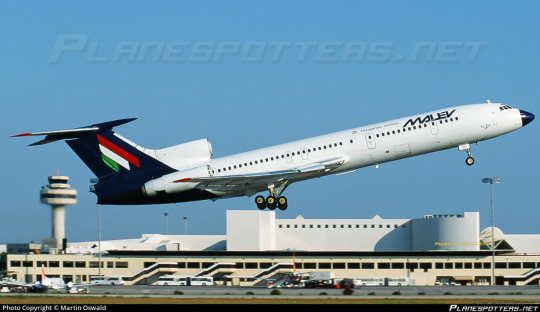
Unfortunately, on a somewhat longer-looking plane like the Tu-154 the white fuselage expanse becomes quite a bit more stark. That staggering just isn't enough to avoid the desolate feeling.


It gets even worse with modern Western planes, which lack the almost violent wing sweep, sharpness, and short fuselage of the Tu-134. MALÉV operated both the 767 and the 737-800, and these just don't have enough visual interest in the center to keep the plane from being a big white sausage. Plus, Boeing noses are pointy, but they're not as pointy as Tupolev noses, which means the nose paint covers less space. This is nearing the Lufthansa Line, which is my new term for the point where a plane has so little happening anywhere except the back that it looks distinctly rear-heavy.
(As well as crossing the Lufthansa Line as a sort of event horizon, the 'Lufthansa Line' can also refer to the literal shape of the straight line downwards. The similar practice which utilizes a curve instead of a straight line is the Lufthansa Line, SAS Variation. The Lufthansa Dec-lined - no, I'll stop. I need to maintain a tiny bit of dignity so I can still make fun of jetBlue without being a hypocrite.)

Like most liveries which straddle or cross the Lufthansa Line, this looks completely fine and proportional on a plane which is sufficiently short and/or stubby to reduce the ratio of rear to full body to around one-third, and the more stretch you add the worse it looks.

A short-looking fuselage like that of the Q400 also mitigates the effect a little. Plus, they do something I keep telling operators of planes with this sort of square tail to do - extend the paint to more of the fuselage, rather than keeping it a straight line. It just unfortunately isn't quite enough, though the pointy nose, shortness, and slight extension definitely mitigates the effect enough that I think it's...very nearly acceptable.
The incredible thing is that MALÉV actually solves this problem!

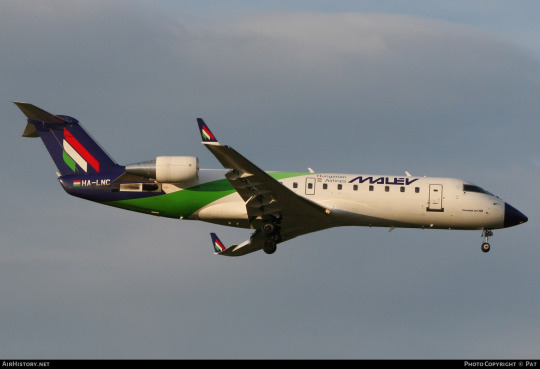
I love this little green swoosh upwards. Now, I think I would have chosen a different color for it - either a slightly lighter blue or maybe a darker green. I like how it tapers and fades towards the top. I like how it overlaps the bottom of the main blue section. I think it basically entirely solves the problem in an elegant way.

Unfortunately, this feature was used only on the CRJ-200 fleet. The CRJ is already a plane that's on the Lufthansa-proof side, particularly the shortest -200 variant, so it's a shame we didn't get to see this do some real legwork on a model that desperately needed it. Still, I think that Lufthansesque design could take notes from this, as it basically solves their issue! I don't get why this isn't something you see done. It's such a simple but satisfactory solution. Why, why did MALÉV not generalize this to their other planes?
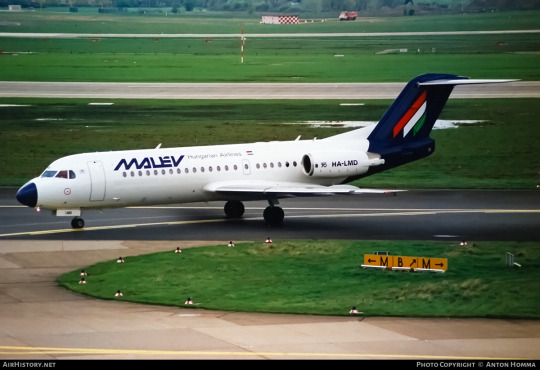
Wrapping up my thoughts is the most challenging part of this. Normally I try to judge liveries by their weakest link - Lufthansa or TAM don't get let off because their liveries look better on short planes. But there's enough about the design choices that were made by MALÉV that I keep resisting tossing them into that same pit.
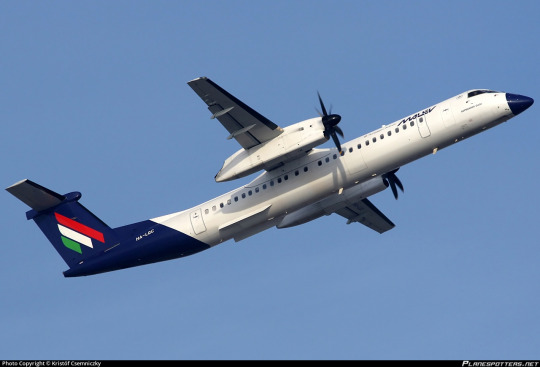
Nothing about MALÉV's livery really changes things drastically enough that it fundamentally deviates from the Lufthansa Line archetype, but it feels like the tiny tweaks change just enough that I actually think it's pretty okay. The painted nose, in particular, does a lot for me. I can't help but wonder if I'm being too kind to MALÉV because they operated so many pointy, angular, square airframes that really prevent the weaknesses of the Lufthansa Line from showing, and I try not to judge based on mitigating airframe factors if the airline operates types that aren't so lucky, but I just can't help but think the nose does add something very tangible, a sense of forward motion and a feeling of character that makes me hate it distinctly less, and the color choices are also nice!

And it's this feeling of character that keeps me...not really disliking this livery even though I will freely acknowledge it's lacking. There's something compelling accomplished just by painting the nose. I almost find that bizarre.

But, honestly...mostly white or not, I think these planes have enough color to them at the tarmac at Budapest wouldn't seem completely desolate. I think they'd go well with Wizz Air too. So, I mean...I think ultimately I like MALÉV, yes.
I'm going to give them a C+.
I can't justify going higher than that. But the main impression I've taken away is that I really wish MALÉV got a chance to overhaul their livery for the 2020s. What they had in their final phase actually looks quite contemporary, but that's because it was played out before it became an actual trend - introduced 1986, it predates even FedEx. I definitely can't rule out that whatever they redesigned this into would be worse, but as long as they kept the painted nose that's at least one thing I like a lot.

I've heard the Hungarian government would like to someday resurrect MALÉV if finances allow. To be clear, I do mean that I've heard it secondhand, but I can't find the actual source on it. This may be because I don't read Hungarian, but I think it would be nice to see. Even if there's a fifteen or even twenty-year gap, that's a better thing to see for a legacy which spans three-quarters of a century than for it to end there, and it's about time Hungary had a flag carrier again.
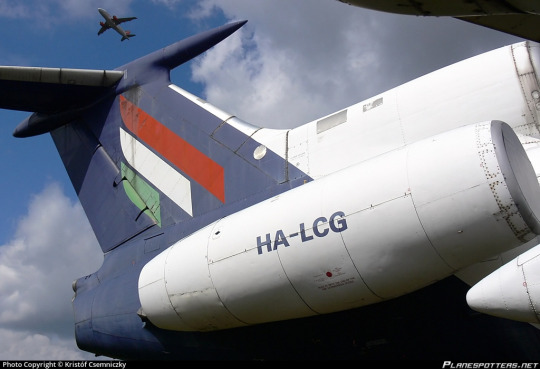
―――――――――――――――――――――――――――――――
Footnotes are so fantastic and useful. Why haven't I been using footnotes until now? I digress so much, why haven't I been making my posts more legible? I mean, tumblr unfortunately doesn't let you link to part of a post so they're not as useful as they are on other websites, but, like, no worse than endnotes in a book, right? And I deal with those all the time with very little grumbling.
[1] You can even still take a sightseeing flight on HA-LIX, or see her at airshows, where she looks fantastic for her 74 years of age (built 1949). She is operated by the Goldtimer Foundation on behalf of her owners, the Hadtörténeti Museum, still wearing the livery of her former operator, MALÉV. She even just got a round of restoration in early 2022, and is potentially the only airworthy Li-2 in the entire world of over 5,000 built, as it's thought the only other recent user, the North Korean Air Force, has mothballed theirs. [2]: I saw multiple mentions of László Zsótér as the designer of this livery, but cannot find any mention of whether he worked for an outside agency or was in-house at MALÉV. [3]: I mean, when you think about it, all of MALÉV's airplanes are painted birds. [4]: ie, schemes that are also primarily red and green but include other color(s) like blue, yellow, or black - see Ethiopian Airlines or MEA for an example - as well as honestly color schemes that are just red and white or green and white. It's honestly as bad as red, white, and blue.
#tarmac fashion week#grade: c+#region: central europe#region: hungary#malév hungarian airlines#flag carriers#defunct carriers#requests#era: 1960s#era: 1940s#era: 1950s#era: 1970s#era: 1980s#era: 1990s#era: 2000s#era: 2010s#region: soviet bloc#lufthansa line
13 notes
·
View notes
Text
Thames Water selects KKR as preferred bidder
Unlock the digestive of free editor Roula Khalaf, the FT editor, chooses her favorite stories in this weekly newsletter. Thames Water has chosen the US private capital group KKR as its favorite bidder to take control of the biggest water services in the Kingdom and assist its battle against renationalization. KKR, who is already a shareholder in Water Northumbian, had submitted a 4 billion bid…
0 notes
Text
Thames Water selects KKR as preferred bidder
Unlock the digestive of free editor Roula Khalaf, the FT editor, chooses her favorite stories in this weekly newsletter. Thames Water has chosen the US private capital group KKR as its favorite bidder to take control of the biggest water services in the Kingdom and assist its battle against renationalization. KKR, who is already a shareholder in Water Northumbian, had submitted a 4 billion bid…
0 notes
Text
The Southern Railway


Hello everyone, @network-rail here. I created this blog because @northern-fail mentioned that there weren't any southern railroad blogs to have a rivalry with (see here for context). The whole point of this blog is to have an friendly rivalry with the railways up north, I don't really have any other plans for it. Once renationalization happens I might change it to Network SouthEast to reflect the change (or possibly something else if we get a new southern region).
This is based on the original Southern Railway, one of the "Big Four" that operated in Britain from the 1923 grouping until nationalization in 1948. The Southern Railway built what was at the time one of the world's largest electric railway networks, using 750V DC third rail, which is why the southeast of Britain still uses that instead of 25kV AC overhead.
If you're looking for the modern-day company run by Govia Thameslink Railway that goes by the name of Southern and uses a lot of the original Southern's branding, then you can stay only if you name at least two british trains that aren't Class 377s.
If you're looking for the american Southern Railway (which is older than the British one, funnily enough) that is now a part of Norfolk Southern (Safety Fourth!) then you can stay only if you sing the entirety of "Union Dixie."
16 notes
·
View notes
Text
Can only hope that this will be seen for what it is through the lens of history.
“the right of Jewish people, like all people, to determine their own future” obviously a hard statement to disagree with, but it’s along the same lines as a sentiment that I’ve heard repeatedly recently that “(we can all agree that) all peoples around the world deserve independence and the right to self determination”. But where do you draw the line? Should Vermont secede? Should cumbria renationalize?
I understand that this sentiment is rooted in the post-colonial context and may be a sort of useful default / rallying cry. I agree with the self determination part I guess. I think the part I disagree with most might be “peoples”.
it’s a useful concept in the face of an oppressor/colonizer/tyrant majority. Something you can organize around, propaganda, literal nation building. But from my personal perspective it’s more of a necessary evil than a righteous truth. Some independence movements are righteous (but not truthful). But many aren’t. Take the US civil war. Or, hot take, US independence? Idk
I’m paraphrasing another post I read on here sometime in late 2023 maybe, wrt the utility of a Palestinian national identity. I just now realized the same could be said of zionists during and following the war. Their nationalism was a useful tool, and I think the argument that a nation-state provides protection for “inalienable” rights has some merit. But look now at what that nationalism has brought about.
Of course the obvious counter is “your right to swing your fist ends where my face begins”. Maybe I’m cringing at the sentiment that the swinging of fists as an unambiguous good without nuance.
Nations seem a profoundly outdated idea. As empty as nobility. I feel ashamed imagining myself saying this to someone for whom the nation is the all absorbing hope, though.
0 notes
Text

Now that they’ve announced SWR will be the first to be renationalized I’m really hoping that the class 455s will still be around then; it’ll be nice for them to have survived the whole way through privatization
#trains#Great British Railways#train photography#just imagine all of them in GBR livery#Whatever that will look like
55 notes
·
View notes
Text

40 years, a nuclear risk under control?
Is using 40-year-old nuclear power stations a controlled risk? When will other energy sources be available? Vote!
For more information:
Nucléaire : mais dans quel état sont nos centrales ! – Le Parisien: http://www.leparisien.fr/espace-premium/actu/mais-dans-quel-etat-sont-nos-centrales-nucleaires-16-03-2016-5630383.php
Diagnostic alarmant d’EDF sur les diesels de secours des réacteurs nucléaires -Le journal de l’énergie: http://journaldelenergie.com/nucleaire/diagnostic-alarmant-edf-diesels-secours-reacteurs et http://journaldelenergie.com/nucleaire/systemes-secours-depasses-reacteurs-nucleaires-edf/
– L’OCDE: https://www.oecd.org/fr/presse/la-france-s-est-fixe-des-objectifs-ambitieux-en-matiere-d-environnement.htm
et le rapport complet: http://www.keepeek.com/Digital-Asset-Management/oecd/environment/examens-environnementaux-de-l-ocde-france-2016_9789264252592-fr#.WRxi9FKB3NA#page1
Emmanuel Macron se révélera-t-il aussi médiocre que François Hollande sur l’écologie ? – Bastamag: https://www.bastamag.net/Emmanuel-Macron-se-revelera-t-il-aussi-mediocre-que-Francois-Hollande-sur-l
– FI: https://laec.fr/section/39/100-d-energies-renouvelables-en-2050
Climate change means we have to move away from energy sources that emit greenhouse gases. Nuclear power is not a solution for the future. It does not resolve any issues: neither the independence of supply, nor the safety of the installations, nor the management of waste, nor the financial costs. We must therefore move away from it. It is an exciting technical and human horizon. Several studies (NegaWatt, Ademe, etc.) have shown that it is possible by 2050. All that is lacking is the political will.
The program of La France insoumise proposes to implement the following measures:
Adopt an energy transition plan with a dual focus on energy efficiency and the transition to renewable energy.
Develop all renewable energy sources.
Phase out carbon-based energy, starting with an end to subsidies for fossil fuels and all exploration for shale gas and oil and coal.
Stop the privatization of hydroelectric dams.
Abandon nuclear power.
Immediately close Fessenheim, guaranteeing the employment and training of employees to turn it into a pilot site for decommissioning.
Abandon the major overhaul operation aimed at extending the life of nuclear power plants beyond forty years.
Abandon the EPR projects (Flamanville and Hinkley Point) and the burial of nuclear waste in Bure.
Make public the data on the burial of nuclear waste over the last sixty years and provide information on proven and/or potential health hazards.
Create a public energy center to pursue a coherent policy, by renationalizing EDF and Engie (formerly GDF) in conjunction with local renewable energy production and consumption cooperatives and by promoting self-production and the sharing of surpluses.
Reverse the liberalization of the electricity market and repeal the NOME law.
– Les Suisses approuvent l’abandon progressif du nucléaire – Le Monde : http://mobile.lemonde.fr/europe/article/2017/05/21/les-suisses-appeles-a-se-prononcer-sur-l-abandon-progressif-du-nucleaire_5131268_3214.html
– Les centrales nucléaires françaises ne sont toujours pas aux normes post-Fukushima – Le Monde: https://www.lemonde.fr/planete/article/2019/03/11/les-centrales-nucleaires-francaises-ne-sont-toujours-pas-aux-normes-post-fukushima_5434350_3244.html
Translated with Deepl
-------------------------------------------------
40 ans, un risque nucléaire maîtrisé?: https://www.aurianneor.org/40-ans-un-risque-maitrise-votez-pour-defendre/
Useful Ecology: https://www.aurianneor.org/useful-ecology/
Tomorrow – Chap 2: L’énergie: https://www.aurianneor.org/tomorrow-chap-2-lenergie-demainlefilm/
Fund: https://www.aurianneor.org/fund-according-to-the-latest-international/
Overconsumption of lithium: https://www.aurianneor.org/overconsumption-of-lithium/
Solidarité Helvétique: https://www.aurianneor.org/solidarite-helvetique-democratie-semi-directe/
Yes to the popular referendum!: https://www.aurianneor.org/yes-to-the-popular-referendum/
#accident#aurianneor#edf#emmanuel macron#eric besson#french nuclear power plants#fukushima#fukushima daiichi#hanford site#japan#loi nome#macron#nicolas sarkozy#nucléaire#nuclear fallout#nuclear meltdown#nuclear power#nuclear power plants#nuclear reactors#nuclear waste#ocde#presentation#president#radioactive
1 note
·
View note